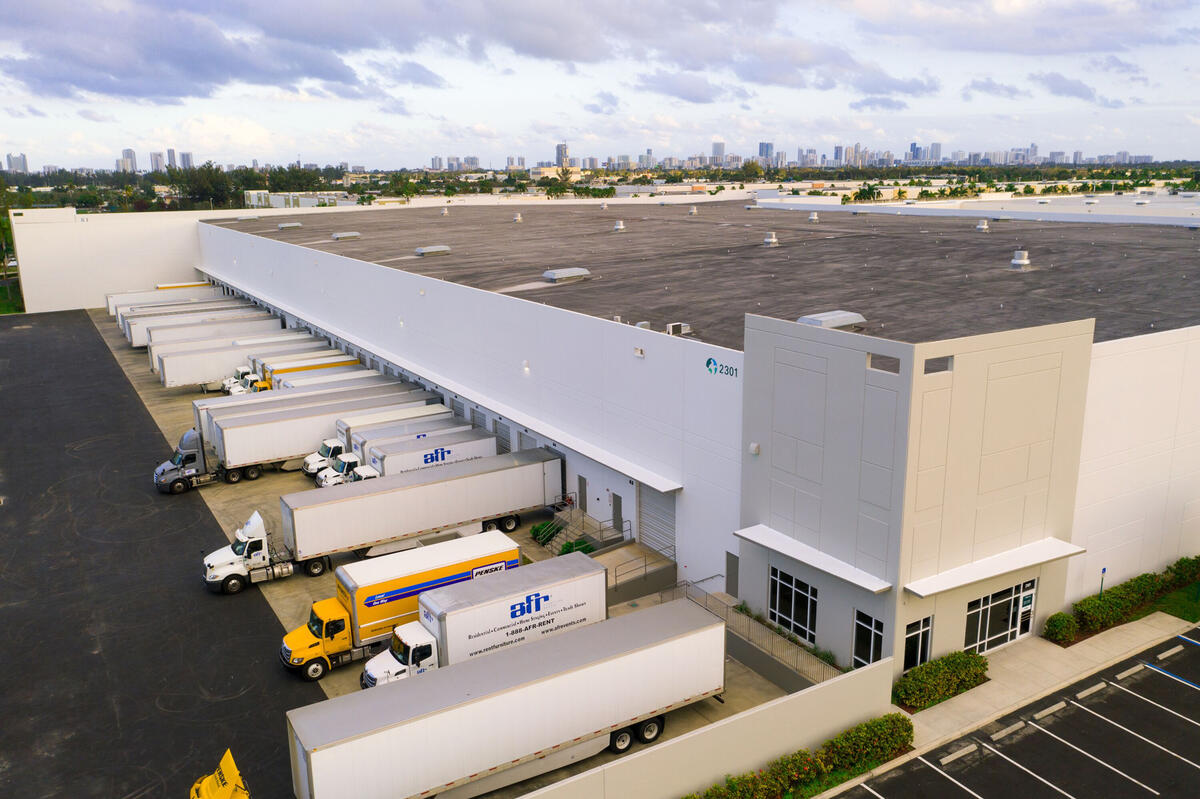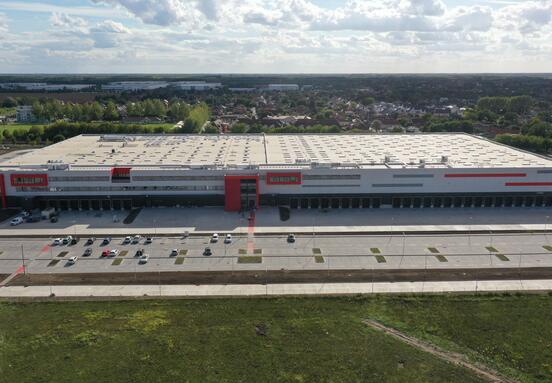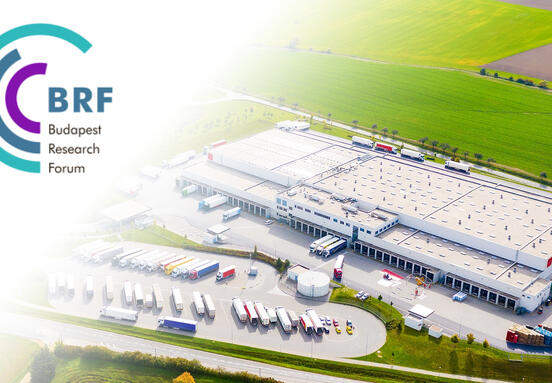Introduction
Logistics real estate demand will continue to evolve as consumer behaviors and supply chains shift. Prologis’ approximately 1 billion square foot global portfolio illustrates the diversity of the logistics real estate customer base, with no single industry accounting for more than 15% of base rent. This diversity, coupled with supply chains’ essential role in all forms of revenue generation, fosters resilience as nearly 60% of customer industries are growing.
Prologis Research divided the COVID-19 impact into three phases: the Stay-at-Home Economy, the Recovery, and the New Normal. In this paper, we have focused on the first two phases and connected them with key trends that could lead to either increased or decreased logistics real estate depending on customer industry. U.S. Census retail sales by category demonstrate relative performance.1 In our next paper, we will focus on supply chain lessons learned from the pandemic, with an increased focus on key customer industries and longer term impacts.
Our current analysis focuses on the near-term economic phases of the pandemic:
- The Stay-at-Home Economy. March retail sales by category, when weighted by logistics real estate industries, outperformed by 730 basis points, declining by 1.4% versus -8.7% for total retail sales.2
- Recovery. In past recessions, retail sales across logistics real estate industries outperformed by 330 basis points against total retail sales growth.
Logistics Real Estate in the Stay-at-Home Economy
Economic weakness and shelter-in-place are set against new sources of demand. This sudden shift has resulted in a demand surge across certain industries, with an emphasis on the crucial role that logistics real estate plays in everyday life. As of this writing, Prologis’ proprietary data reflected a double-digit increase in proposal and lease generations (leading indicators of lease signings) in the U.S. and Europe (mid-March through early April). In spite of the disruption, the vast majority of customers—roughly 95% across the globe—remain at least partially operational.
New sources of demand are being driven by the following:
Stockpiling. Faced with an extended stay at home, consumers have rushed to stock up on grocery and consumer products. They purchased these items at a broad range of retailers that collectively represent more than 24% of the Prologis customer base (hereafter just referred to as the customer base).4 In March, U.S. grocery sales jumped by nearly 30%.5 Rapid replenishment operations restocked store shelves, while grocery deliveries skyrocketed. As of late April, e-commerce same- and next-day delivery windows continue to remain difficult to secure.
Medical support. Demand for medical supplies, pharmaceuticals and personal protective equipment increased broadly across the globe, but fluctuating COVID-19 hot spots also highlighted the need for responsive supply chains. Healthcare represents about 5% of the customer base and primarily comprises medical supplies and equipment.
Inventory building. China’s work stoppages caused shipments to double at a time when many customers had no store shelves to fill. This drove increased need for short-term space across a range of industries, with a sharp increase in demand from logistics companies that specialize in supply chain management. Short-term leases rose 40% year-over-year in the 30 days through April 17, 2020.
Office and school closures. Almost overnight, many households went from transporting family members to work and school and attending social events to concentrating all of these activities at home. Retail sales of select products within the diversified retail category (~8% of customer base) and electronics/appliances (~8%) increased sharply; examples include school supplies, computers/monitors and desks/chairs.
Limited mobility. Commerce has undergone an extreme modality shift. Preliminary estimates suggest e-commerce sales rose by upward of 50% in March (versus the recent trend of ~15%), including outsized gains in previously under-penetrated categories such as grocery. E-fulfilment operations accounted for nearly 40% of new leasing in March and April. In addition, at 11% and 5% of the customer base, respectively, many transportation/distribution and packaging/paper customers are connected to increased parcel volumes.
March retail sales highlight the resilience and outperformance of logistics. U.S. retail sales revealed a sharp bifurcation of industry growth during the Stay-at-Home phase. The table below lists retail sales changes (along with share of the logistics real estate customer base) as of March 31, 2020.6 Approximately 60% of these customers experienced growth, while 40% saw revenues decline. In total, logistics real estate industries outperformed the national average by 730 basis points, with a decline of 1.4% versus -8.7% for all of retail.
At-risk segments. New behaviors have created significant challenges in some industries. In total, identifiable direct logistics real estate exposure to the most hard-hit industries is small, at 3-4% of the customer base (auto sales, travel/tourism/conventions/entertainment, restaurants, department stores, aerospace/oil and gas). However, segments of the aforementioned industries will likely also face challenges, particularly small- to mid-sized customers that, irrespective of government support, don’t have the operational flexibility to handle a pandemic. Segments with a notable concentration of these customers include transportation/distribution, food and beverage, and apparel/sporting goods.
- Auto. Already facing supply-side challenges from China’s earlier work stoppage, automotive customers (~6% of customer base) were then hit by a sharp slowdown in sales due to shelter-in-place orders and a lack of travel. However, for logistics real estate, the vast majority of auto customers are focused on servicing the existing vehicle fleet, rather than new sales, which bodes well for demand when travel patterns begin to return to normal.
- Travel/tourism/conventions/entertainment. Together, these users account for approximately 1% of the logistics customer base, with a high degree of concentration in markets such as Central Florida, Las Vegas and Orange County.
- Restaurants. Restaurant-only suppliers account for less than 1% of the logistics customer base, although some food and beverage users likely service both grocery and restaurant channels.
- Department stores/ apparel/sporting goods. Department stores account for less than 1% of the customer base, while the apparel/sporting goods segment comprises between 6-7%.
- Oil and gas. These users are not a major source of logistics real estate demand. Together, they comprise less than 0.5% of the customer base.
Development in the Stay-at-Home Economy Phase. Construction timelines are being extended, only those projects already in progress or pre-leased are poised for completion in the near term, and new starts are falling sharply.
- Practical restrictions are broadly hindering the pace of construction. A variety of factors have slowed construction: constrained labor availability, difficulty securing permits and inspections, and shortages of equipment and materials.
- Legal restrictions vary. In the U.S., four states and several cities had banned non-essential construction as of this writing. In Europe, construction is still paused in many countries, but restrictions on manufacturing and construction are among the first to be slowly rolled back (such as in Spain).
- Starts are dropping sharply. The perception of increased lease-up risk has caused many owners to shelve planned speculative projects, including those in the pre-construction phase.
Logistics Real Estate in the Recovery from COVID-19
As response surges continue to evolve, we expect that new logistics real estate requirements will be subdued due to a weak economic recovery or because demand for some categories will have been pulled forward for disaster relief. Industry trends will still matter during this stage, but less robust economic activity will also mean that customer resilience will depend even more on access to capital and the ability to exercise operational flexibility.
Re-opening with limitations. Hard-hit industries are unlikely to return to business-as-usual for some time. Limitations on occupancy could keep revenue for many services businesses, such as restaurants and entertainment venues, depressed through the recovery period.
Shelter-in-place behavior persists. Consumer habits may be slow to return, as evidenced by weekend traffic in China, which remains well below pre-COVID-19 levels even with lifted restrictions. Preferences for home delivery and dining in could prove sticky, driving continued demand for grocery and essential goods to keep individual households operating—creating a more goods-intensive environment without the benefits of scale that can be leveraged in a workplace or school scenario.
Discretionary goods follow typical cyclical patterns. When consumer confidence erodes, so does the likelihood of major and discretionary purchases. In general, auto, home goods, electronics/appliances and apparel/sporting goods businesses tend to see significant revenue losses.
Past retail sales trends by segment illustrate the resilience of logistics real estate. An overweight to basic daily needs shows through in the cross-section of logistics real estate customers and sales growth during the past two recessions. An average peak-to-trough cumulative decline by category reveals strong growth in diversified retail, healthcare, and food and beverage expenditures. In total, logistics real estate industries outperformed the national average by 330 basis points, with a decline of 2.8% versus -6.1% for total retail sales.
Development During the Recovery Phase. Sharply reduced capacity and increased risk perception during the Stay-at-Home economy will continue to influence development activity in the Recovery stage. According to a survey conducted April 6-9 by the Associated General Contractors of America, some 40% of construction firms have furloughed or terminated workers because of the impacts of COVID-19.7 Construction financing is likely to remain difficult to secure, limiting new speculative projects. Until a vaccine is available for broad distribution, there likely will be increased safety measures on construction sites that could further extend timelines.
Conclusion
Diversity yields resilience. The logistics real estate customer base comprises companies that are both benefiting from and being challenged by sudden shifts in behavior, with net outperformance.
- In the current Stay-at-Home economy, demand is surging in large customer industries such as food and beverage, diversified retail, consumer products and transportation/ distribution. Retail sales data indicates 60% of industries within logistics real estate are growing while 40% are shrinking.
- In the Recovery stage, those customers who were able to adapt to new patterns of consumer behavior should increasingly focus on optimizing their supply chains for the “new normal”, including a re-assessment of ideal inventory-to-sales ratios. Customers that serve essential and basic daily needs historically have outperformed in terms of retail sales growth during recessions.
In our next paper, we will focus on supply chain lessons learned from the pandemic, with an increased focus on key customer industries and longer term impacts, such as inventory levels, e-fulfilment, and sourcing strategies.
Forward-Looking Statements
This material should not be construed as an offer to sell or the solicitation of an offer to buy any security. We are not soliciting any action based on this material. It is for the general information of customers of Prologis.
This report is based, in part, on public information that we consider reliable, but we do not represent that it is accurate or complete, and it should not be relied on as such. No representation is given with respect to the accuracy or completeness of the information herein. Opinions expressed are our current opinions as of the date appearing on this report only. Prologis disclaims any and all liability relating to this report, including, without limitation, any express or implied representations or warranties for statements or errors contained in, or omissions from, this report.
Any estimates, projections or predictions given in this report are intended to be forward-looking statements. Although we believe that the expectations in such forward-looking statements are reasonable, we can give no assurance that any forward-looking statements will prove to be correct. Such estimates are subject to actual known and unknown risks, uncertainties and other factors that could cause actual results to differ materially from those projected. These forward-looking statements speak only as of the date of this report. We expressly disclaim any obligation or undertaking to update or revise any forward looking statement contained herein to reflect any change in our expectations or any change in circumstances upon which such statement is based.
No part of this material may be (i) copied, photocopied, or duplicated in any form by any means or (ii) redistributed without the prior written consent of Prologis.
About Prologis Research
Prologis’ Research department studies fundamental and investment trends and Prologis’ customers’ needs to assist in identifying opportunities and avoiding risk across four continents. The team contributes to investment decisions and long-term strategic initiatives, in addition to publishing white papers and other research reports. Prologis publishes research on the market dynamics impacting Prologis’ customers’ businesses, including global supply chain issues and developments in the logistics and real estate industries. Prologis’ dedicated research team works collaboratively with all company departments to help guide Prologis’ market entry, expansion, acquisition and development strategies.
Prologis








